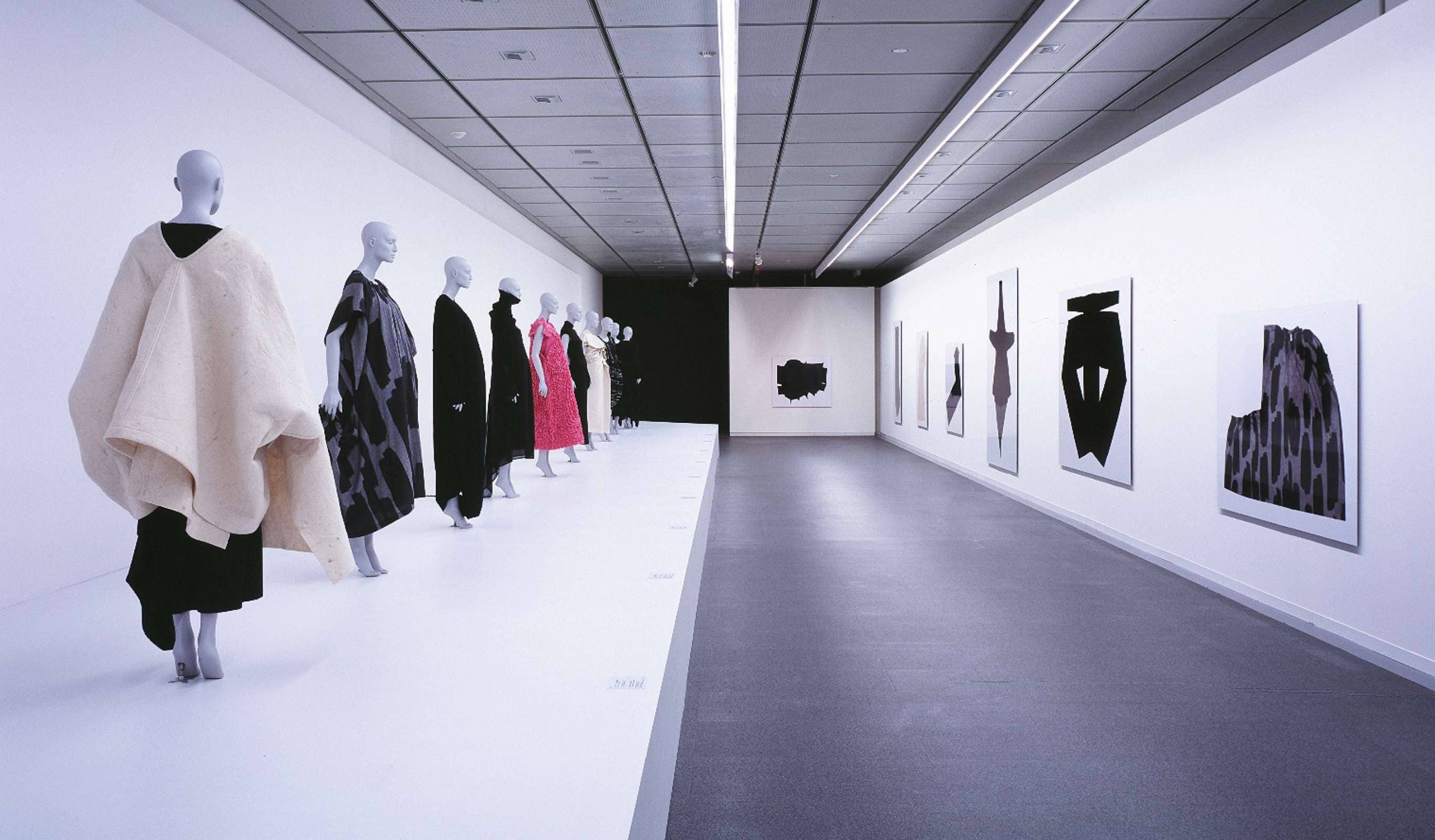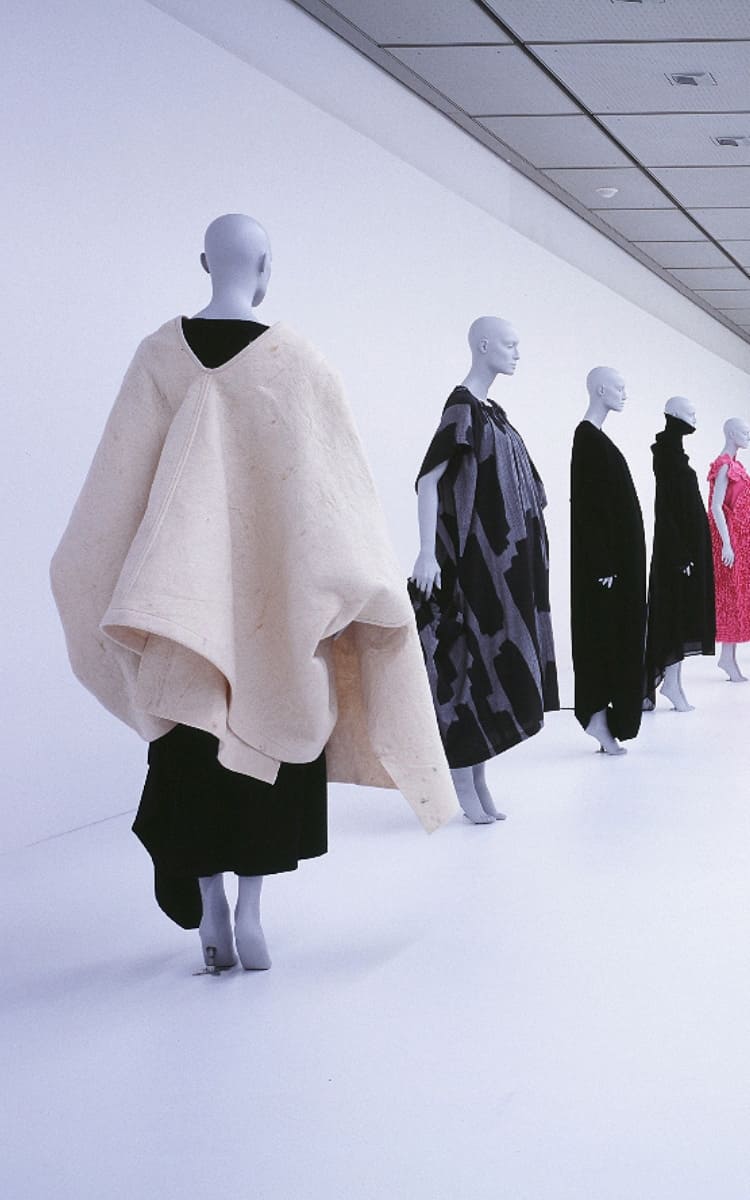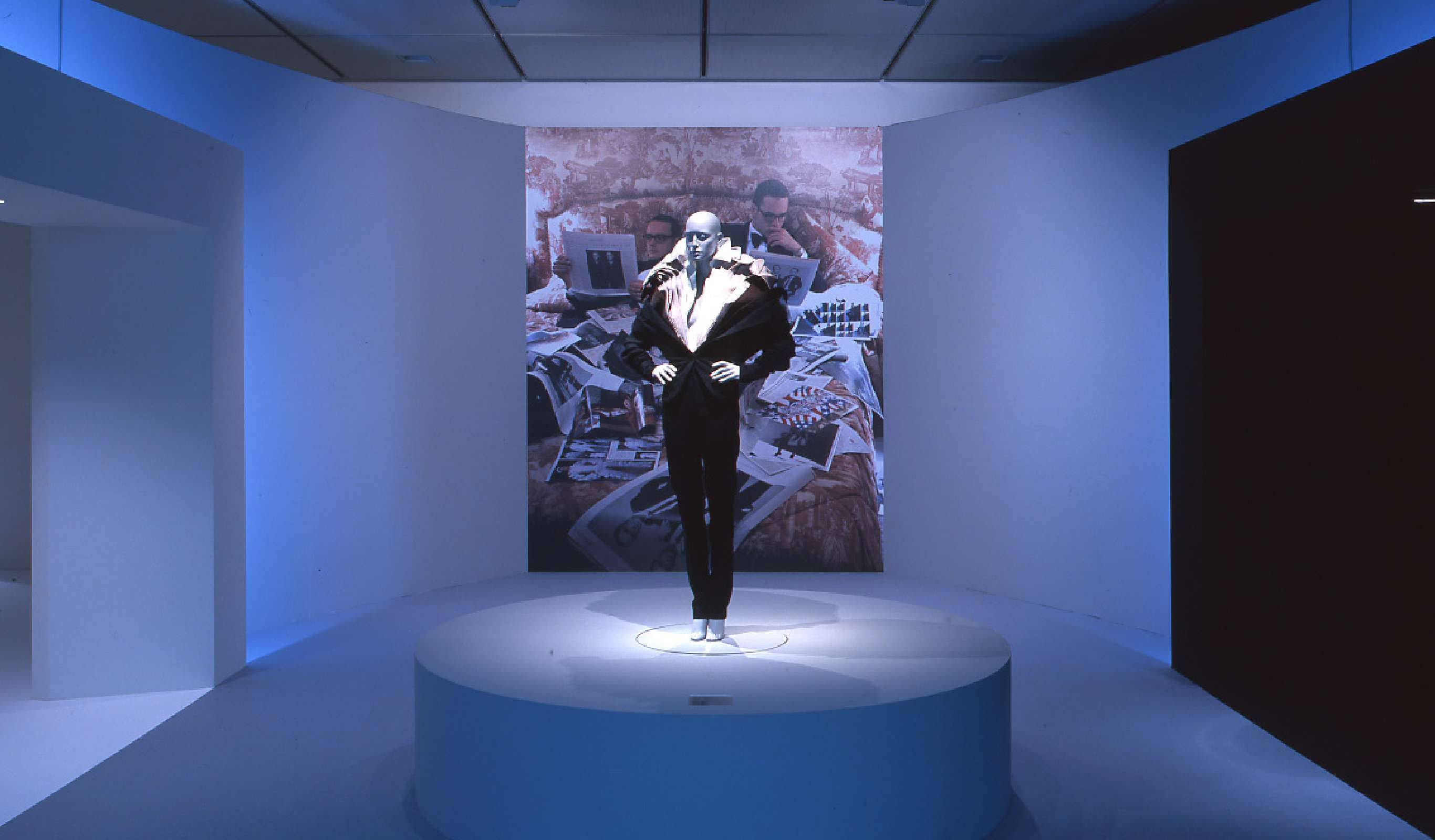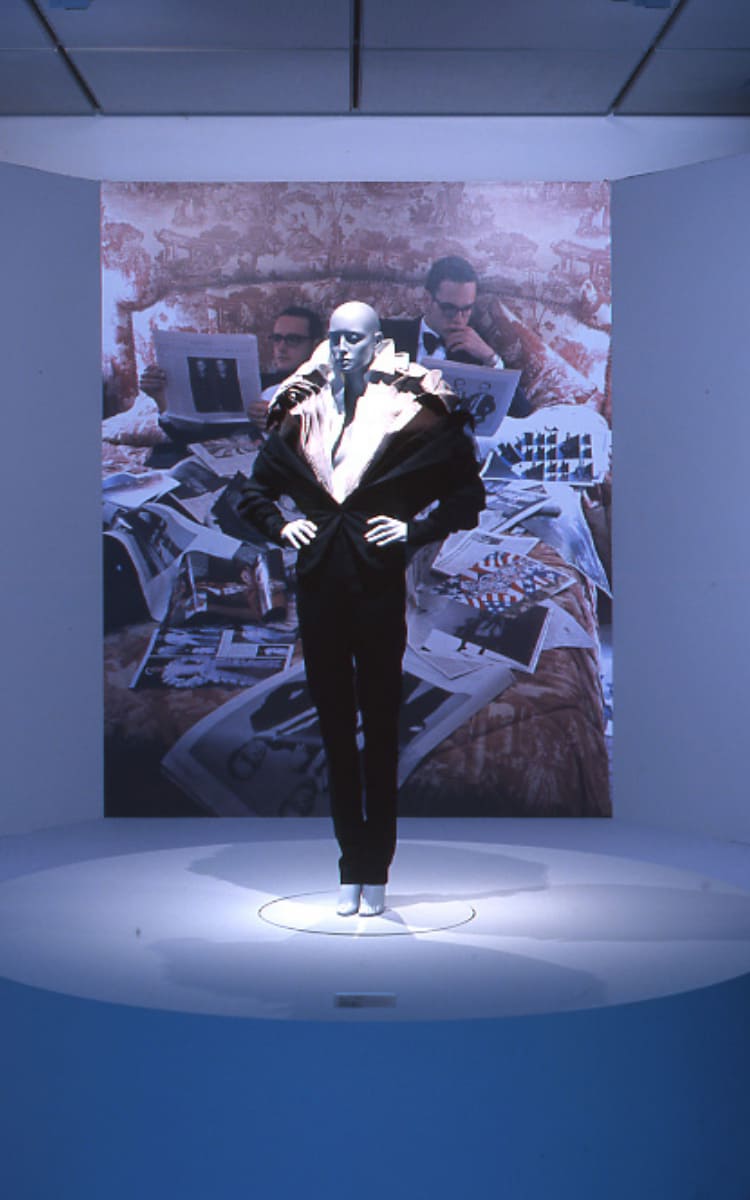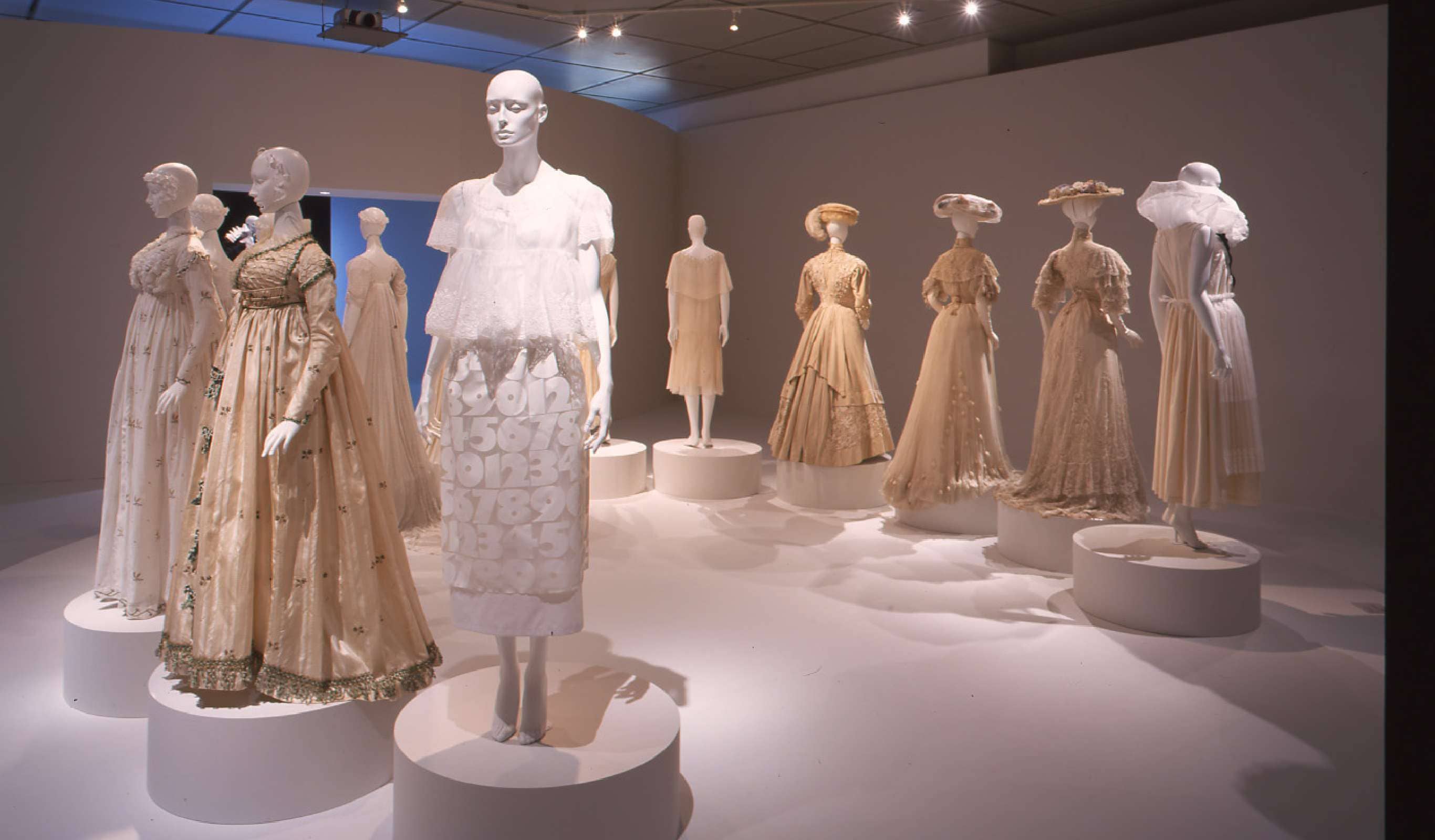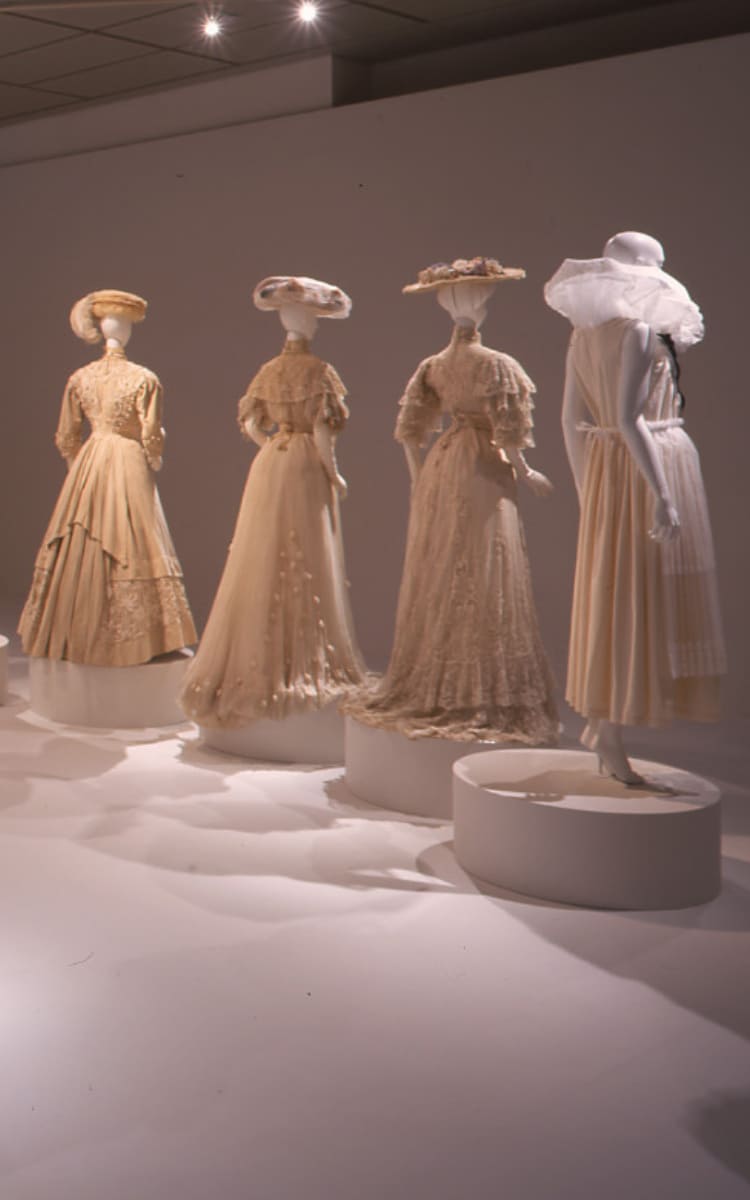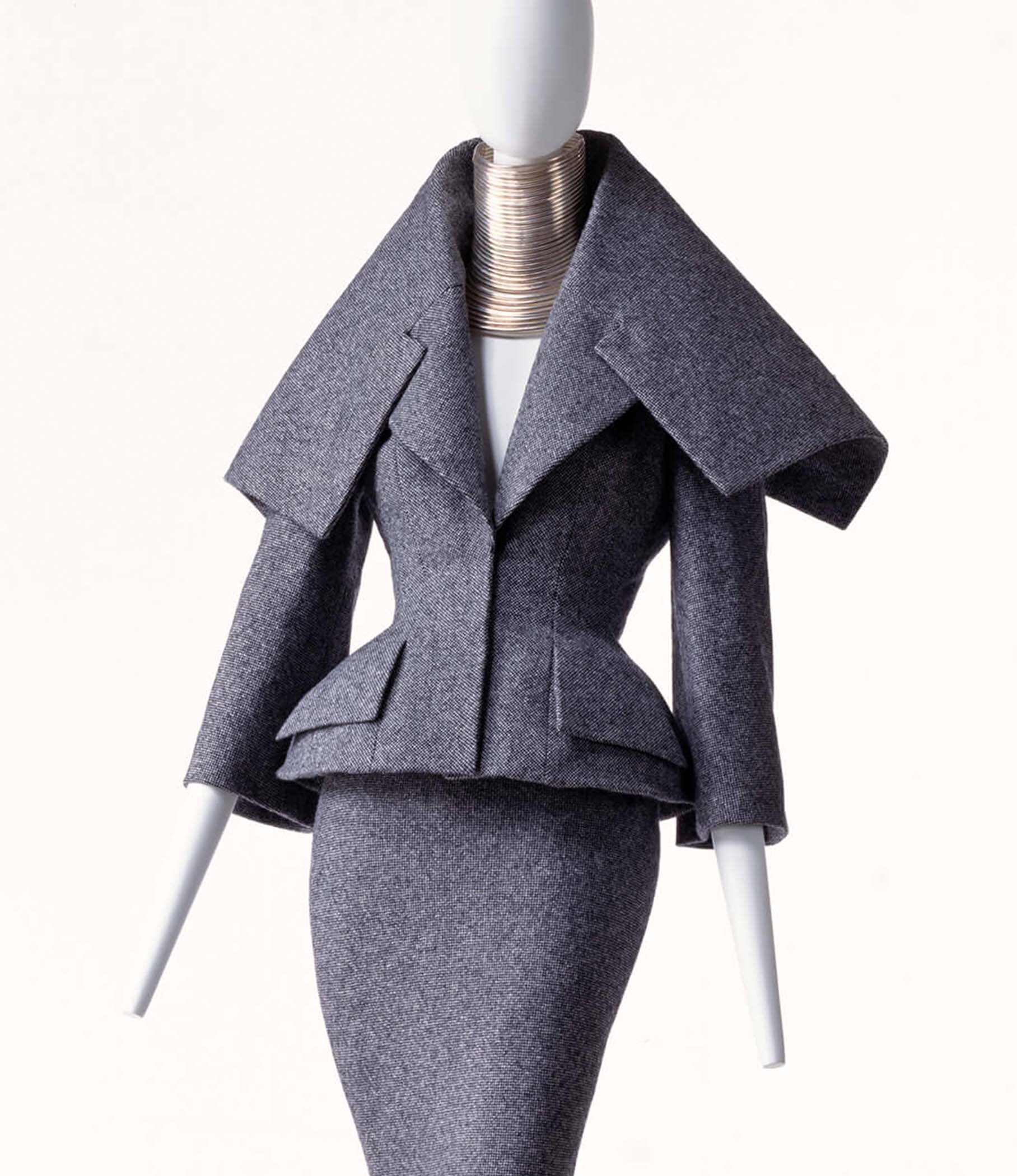 © The Kyoto Costume Institute, photo by Takashi Hatakeyama
© The Kyoto Costume Institute, photo by Takashi Hatakeyama
Suit, ChokerAutumn/Winter 1997
This is the ultimate in body-conscious clothing with an unusually high collar stand, a sharp collar line, a small waist, and a curving hip line that thrusts back. This suit is inherited with the beautiful lines typical of Christian Dior (1905–1957), the founder of the fashion house. It was created by utilizing delicate techniques of Haute Couture. The perfect form, like bondage clothing, seems to purposefully emphasize the traditional factor of body restraint in Western clothes.
John Galliano started designing for Dior in 1996. He creates excellent contemporary designs inspired from historical or ethnic costumes as well as from street fashion, freely remixing their detail elements. Galliano rejuvenated the Dior Brand, which had stuck to a classical elegance, and led the brand boom in the 1990s.
DesignerJohn Galliano
BrandChristian Dior
LabelChristian Dior HAUTE COUTURE AH97 PARIS (Stamp AH97 29374)
MaterialSet of jacket and skirt of gray wool tweed; pad at jacket hem; train with long skirt; choker of 35 rings of two-toned silver.
Inventory Number(s)AC9559 98-13AC
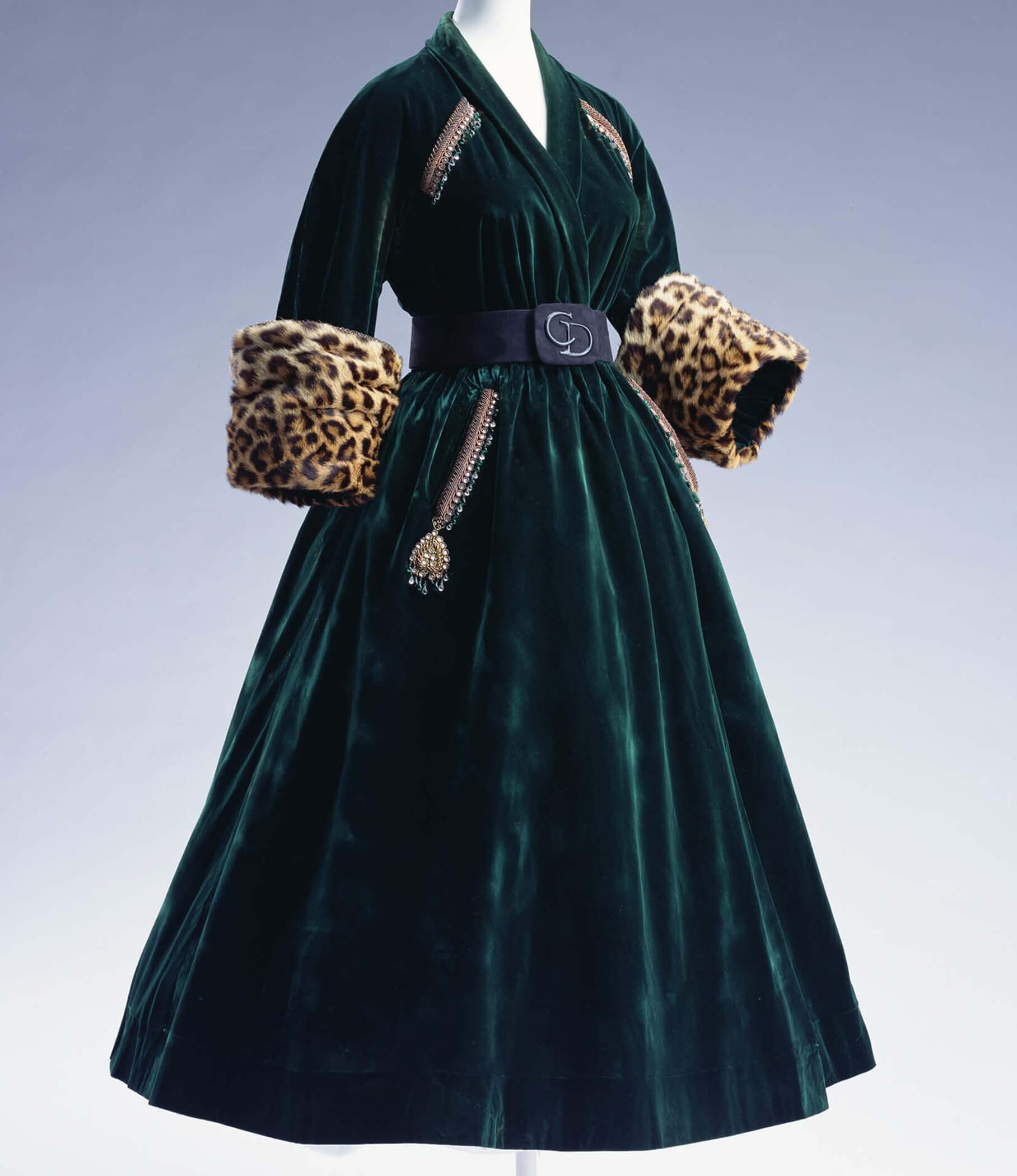 © The Kyoto Costume Institute, photo by Takashi Hatakeyama
© The Kyoto Costume Institute, photo by Takashi Hatakeyama
Coat DressAutumn/Winter 1947
This garment represents a development for Christian Dior who made his dramatic debut in the previous season with his New Look collection. The combination of wild leopard skin and elegant silhouette creates an unexpectedly harmonious look.
The New Look - Dior’s nostalgic and elegant first collection featuring soft shoulders, a narrow waist and a full skirt - was the polar opposite of the austere clothing worn by women during the Second World War. The New Look, which heralded an era of peace, became an international success and went on to define fashion in the 50s. Dior also succeeded in restoring Paris as the center of fashion, with the city becoming, once again, the forerunner of fashion around the world.
DesignerChristian Dior
BrandChristian Dior
Labelnone
MaterialDark Green velvet; cuffs of leopard skin; gold thread, sequin and bead embroidery on bodice and pockets; black suede belt.
Inventory Number(s)AC10425 2001-1-1AB
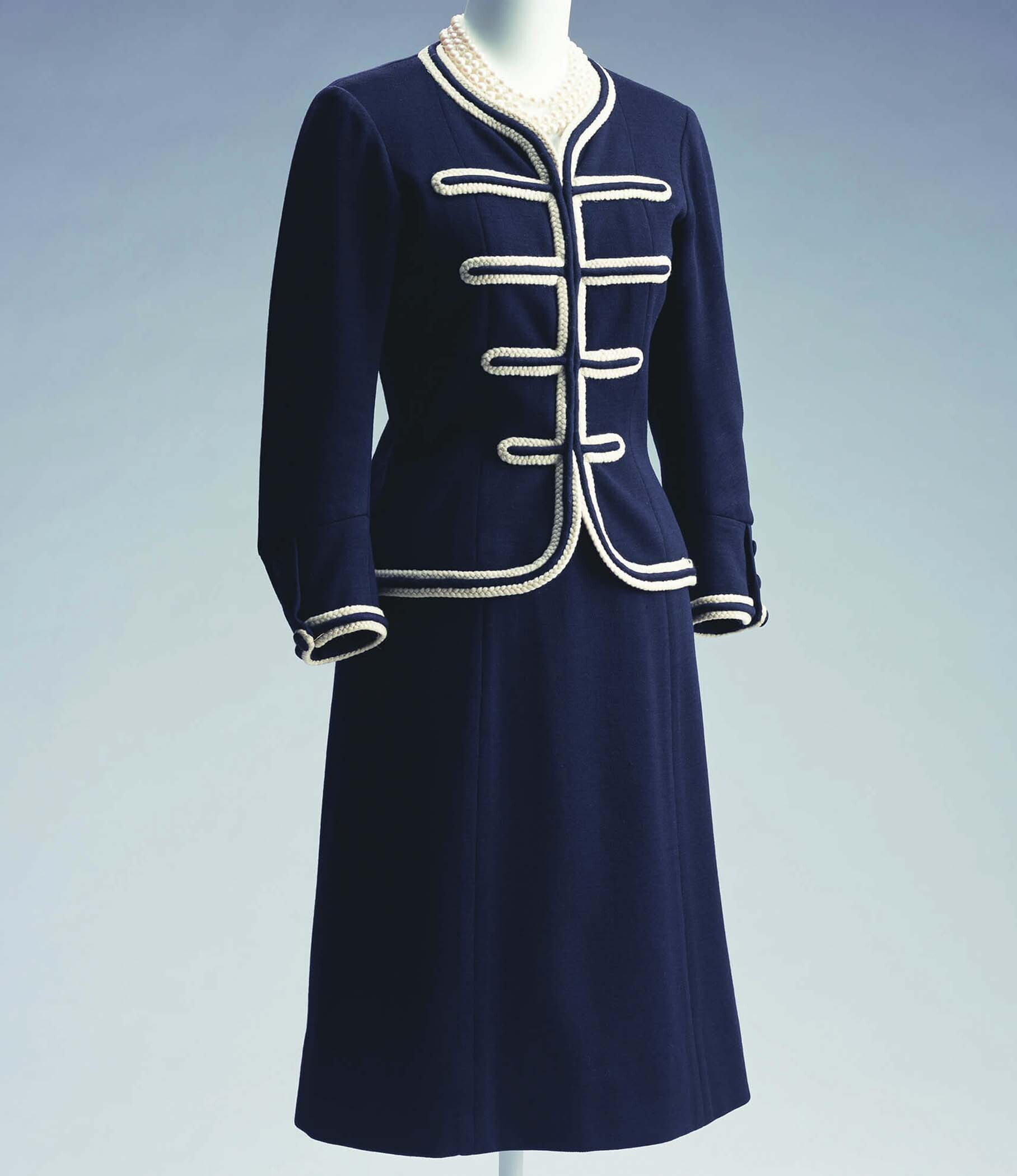 © The Kyoto Costume Institute, photo by Takashi Hatakeyama
© The Kyoto Costume Institute, photo by Takashi Hatakeyama
Day EnsembleAutumn/Winter 1956
This ensemble was created soon after Gabrielle Chanel restarted her career after World War II. Braids became one of the key details of "Chanel suits" after the war, as well as Chanel's logo marks and gold buttons with a lion motif.
Chanel closed her fashion house during World War II, but returned to the Haute Couture world for the spring/summer collection of 1954, when she was 71 years old. Her style, which had not changed from the pre-war period was not given any attention in Paris, being described as "old-fashioned." However, in U.S.A., which was dominated by the progress of the world economy and cultures after the war, American women welcomed the so-called "Chanel suits," which were suitable both for business and formal settings. She sold her patterns to ready-made clothes manufacturers in U.S.A., and Chanel-style suits were diffused from America to the world at large.
DesignerGabrielle Chanel
BrandChanel
LabelCHANELMaterialNavy jersey and skirt: white wool braid; wrapped buttons at cuffs.Credit LineGift of Fashion Institute of Technology, SUNY
Inventory Number(s)AC4812 84-10-2AB
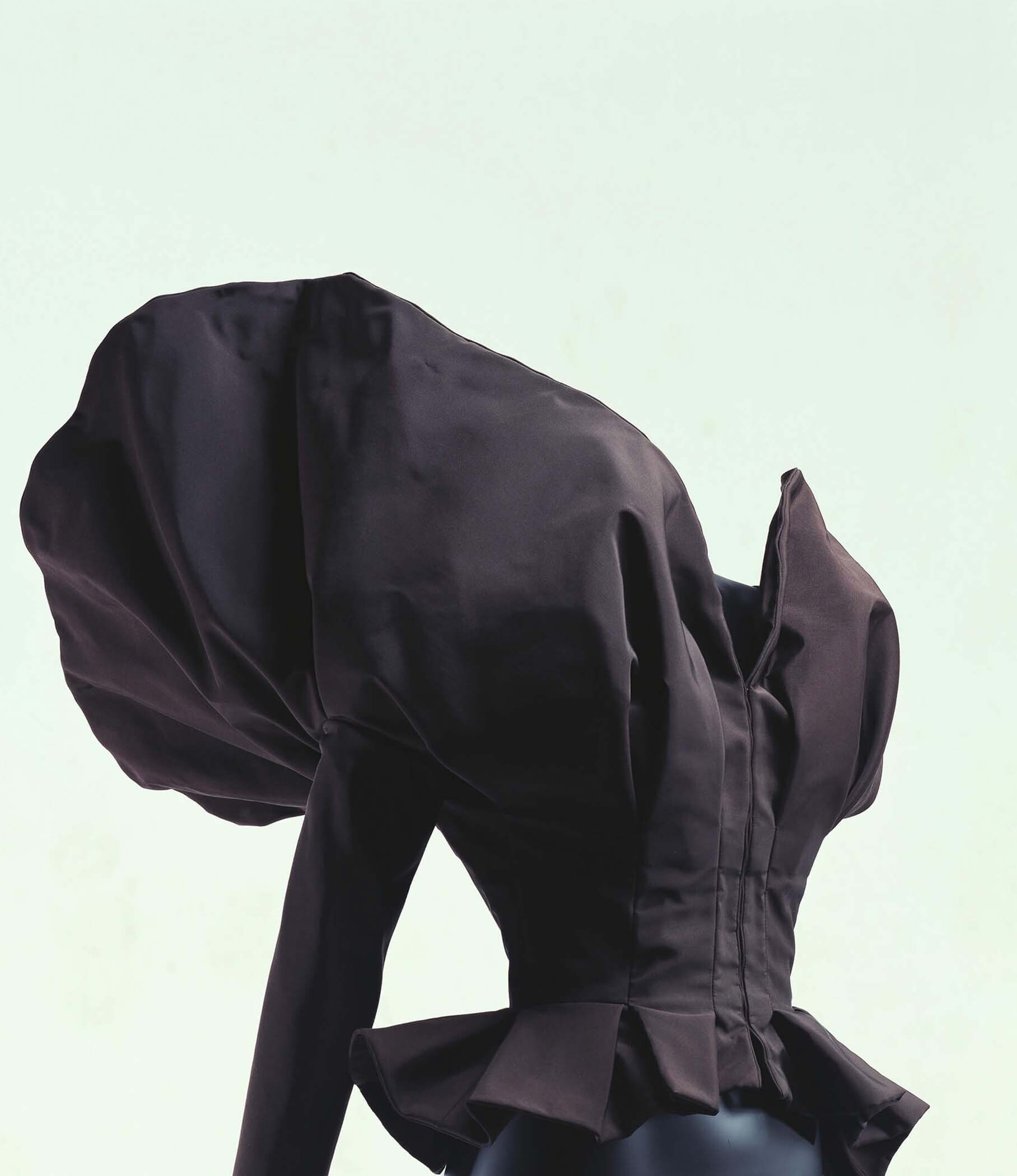 © The Kyoto Costume Institute, photo by Takashi Hatakeyama
© The Kyoto Costume Institute, photo by Takashi Hatakeyama
BodiceAutumn/Winter 1988
Here we see a bodice that looks like a sculpture. A large collar supported by internal wires dramatically stands up from the tight body with internal bones. This is one of Christian Lacroix's Haute Couture works, observing the typical style of the 1980s with big shoulders and a three-dimensional structure.
During the 1980s the trend of returning to tradition became evident. Lacroix formed an Haute Couture fashion house at Paris in 1987, under the wing of LVMH. He majored in the history of arts in college, and brought a fresh sensitivity to the stagnating world of Haute Couture by daringly arranging historic costumes with unrestrained forms such as the 18th century dresses and the bustle style of the late 19th century, recreating them as post-modern dresses for today. Lacroix started prêt-a-porter in 1988, but LVMH sold the Lacroix brand in 2005, and he withdrew from the Haute Couture and the prêt-a-porter markets in 2009.
DesignerChristian Lacroix
BrandChristian Lacroix
LabelCHRISTIAN LACROIX
MaterialDark brown silk faille; bone in bodice; wire in collar.
Inventory Number(s)AC6890 90-47-1A
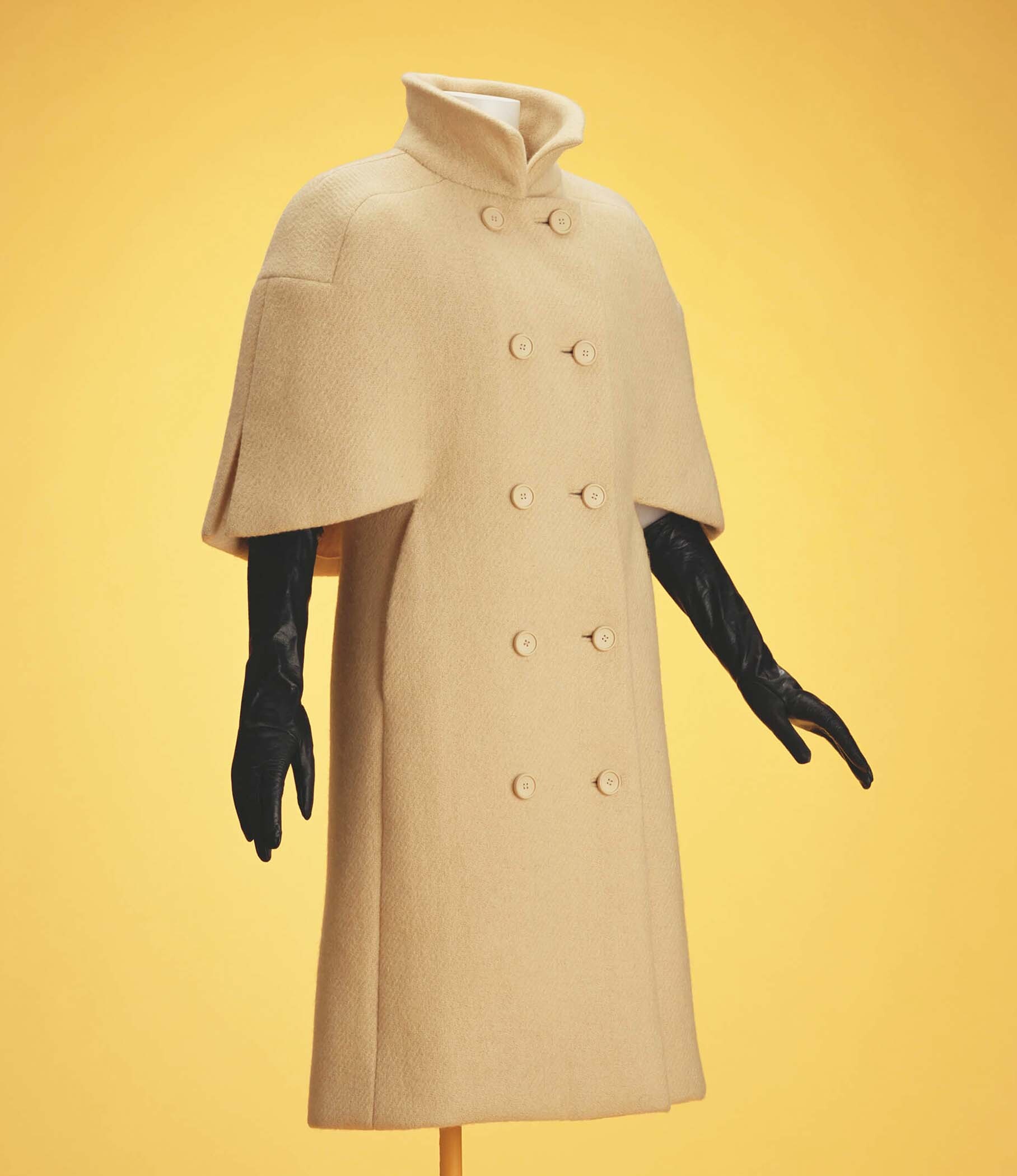 © The Kyoto Costume Institute, photo by Takashi Hatakeyama
© The Kyoto Costume Institute, photo by Takashi Hatakeyama
Coat1963
The gentle curve of the shoulder line and voluminous impression given by this cape coat represent a new form for dress shape. This shape is made possible through an innovative concept for the garment's composition, in which the front and back of the cape, cut as continuations of the body sections, have the separate shoulder section embedded into them to produce a single shape that integrates the parts. This garment displays Balenciaga's masterful techniques, in which he keeps seams to a minimum and makes use of the properties of thick wool fabric to create a three-dimensional item.
As can be seen in his tunic and sack dresses of the 1950s, Balenciaga successfully simplified forms before the trend became prominent in the 1960s, developing new forms that did not simply follow fashions or reference the past. With its sculpture-like beauty of form, this piece fully demonstrates his unique simplicity. His inimitable cutting technique was in large part what made the realization of this kind of new dress shape possible.
DesignerCristobal Balenciaga
BrandBalenciaga
LabelBALENCIAGA 10, AVENUE GEORGE V. PARIS 86550MaterialIvory wool twill; ten buttons at the front.
Inventory Number(s)AC6716 90-16-17

